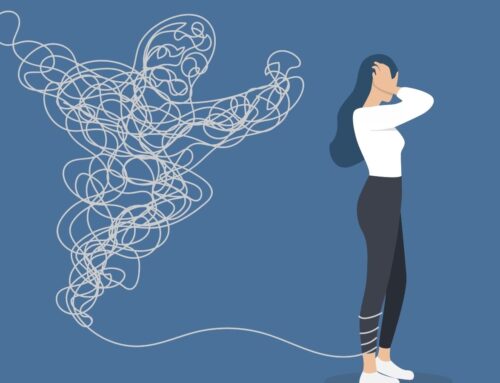As humans, we naturally spend a lot of time and energy trying to figure ourselves out. This process is even more complex and time-consuming for females with ADHD. We can be hyperactive, but also easily overwhelmed and quiet. We can have bursts of energetic productivity, but seconds later, struggle to finish a task. It’s hard to define yourself when day-to-day experiences can be so erratic and confusing. Yet, that doesn’t mean that we are too complicated to understand, it means that we are doing our best to navigate a neurotypical world with ADHD.
There are three forms of ADHD: hyperactive/impulsive type, inattentive type, and combined type. Traits of hyperactive/impulsive type tend to be externalized and more observable from an outsider’s perspective. These include difficulty slowing down, talking passionately and extensively about subjects, fidgeting, and speaking out of turn. Conversely, inattentive type traits tend to be internalized and often go under the radar. These include challenges with concentration, easily getting off track, forgetfulness, time management issues, and having trouble organizing tasks. Combined type includes hyperactivity, impulsivity, and inattention.
Females are more likely to be diagnosed with inattentive ADHD. Yet, so many women go their whole lives without a diagnosis. Many individuals mask, or suppress, their neurodivergent traits in order to fit in and perform in school. This type of compensation takes a significant amount of effort on the part of the student, which can lead to increased stress, perfectionism, and fatigue. Further, these students often internalize negative self-talk, or an inner critic, that might confuse executive functioning challenges with being lazy or unmotivated. This type of self-talk can directly impact identity development and lead to diagnoses of anxiety and depression before ADHD is even considered.
It is common and understandable that females with ADHD (both diagnosed and undiagnosed) find themselves overwhelmed by relationship demands. Navigating neurotypical social expectations with a neurodivergent brain can lead to misperceptions and miscommunications, which can result in fewer meaningful connections. Challenges in starting and sustaining friendships might cause someone to retreat into isolation to shield themselves from discomfort and confusion. As such, they can develop rejection sensitivity, assuming that any social interaction could be a potential source of pain. The emotional wound of feeling like one does not belong can make it extremely difficult to show up in an open and vulnerable way with others despite a deep desire for connection. This can result in significant loneliness, one of the more difficult feelings to sit with.
Central nervous system hypersensitivity is also a feature of ADHD. Tactile defensiveness, sensory overload, and intense emotions result from central nervous system hypersensitivity. Somatic symptoms, like headaches, migraines, nausea, and difficulty sleeping, can also be directly related to this phenomenon. Without an understanding of ADHD, these sensitivities can make an individual feel helpless, out of control, and “too much” for others. In reality, these experiences are directly related to the ADHD neurotype and can be managed with accommodation and support, which can create a sense of self-understanding and calm internally.
Eating disorders are another common co-occurrence in ADHD. A study— Are Eating Disorders Related to Attention Deficit/Hyperactivity Disorder? —conducted by Shauna P. Reinblatt, MD (Johns Hopkins University School of Medicine) found that children with ADHD-combined type demonstrated more bulimia nervosa than those without ADHD, and that impulsivity was the strongest predictor of the presence of the eating disorder. Therefore, individuals who slip through the cracks and are not identified with ADHD will climb an extra challenging uphill battle in their eating disorder recovery. Effective treatment for ADHD can help individuals increase interoceptive body awareness, manage cravings, and improve impulse control.
Females with subtle presentations of ADHD are often told they are many things (shy, anxious, sensitive) before they are properly diagnosed. As a result, a negative self-concept is internalized, ADHD traits are masked, and a diffuse sense of self is developed. Unsurprisingly, we spend a lot of our time and energy trying to understand who we are. An accurate diagnosis and increased understanding of the complexities of neurodivergence will ultimately help you in understanding yourself.
Citations
Reinblatt, Shauna P. “Are Eating Disorders Related to Attention Deficit/Hyperactivity Disorder?.”
Current treatment options in psychiatry vol. 2,4 (2015): 402-412. doi:10.1007/s40501-015-0060-7
Silver, Larry. “When It’s Not Just ADHD: Symptoms of Comorbid Conditions.” ADDitude,
ADDitude, 3 Apr. 2024, www.additudemag.com/when-its-not-just-adhd/.
Editors, ADDitude. “Why ADHD in Women Is Routinely Dismissed, Misdiagnosed, and Treated
Inadequately.” ADDitude, ADDitude, 10 July 2024, www.additudemag.com/adhd-in-women-
misunderstood-symptoms-treatment/.
Crawford, N. S. (2003, February 1). ADHD: A women's issue. Monitor on Psychology, 34(2).
https://www.apa.org/monitor/feb03/adhd






